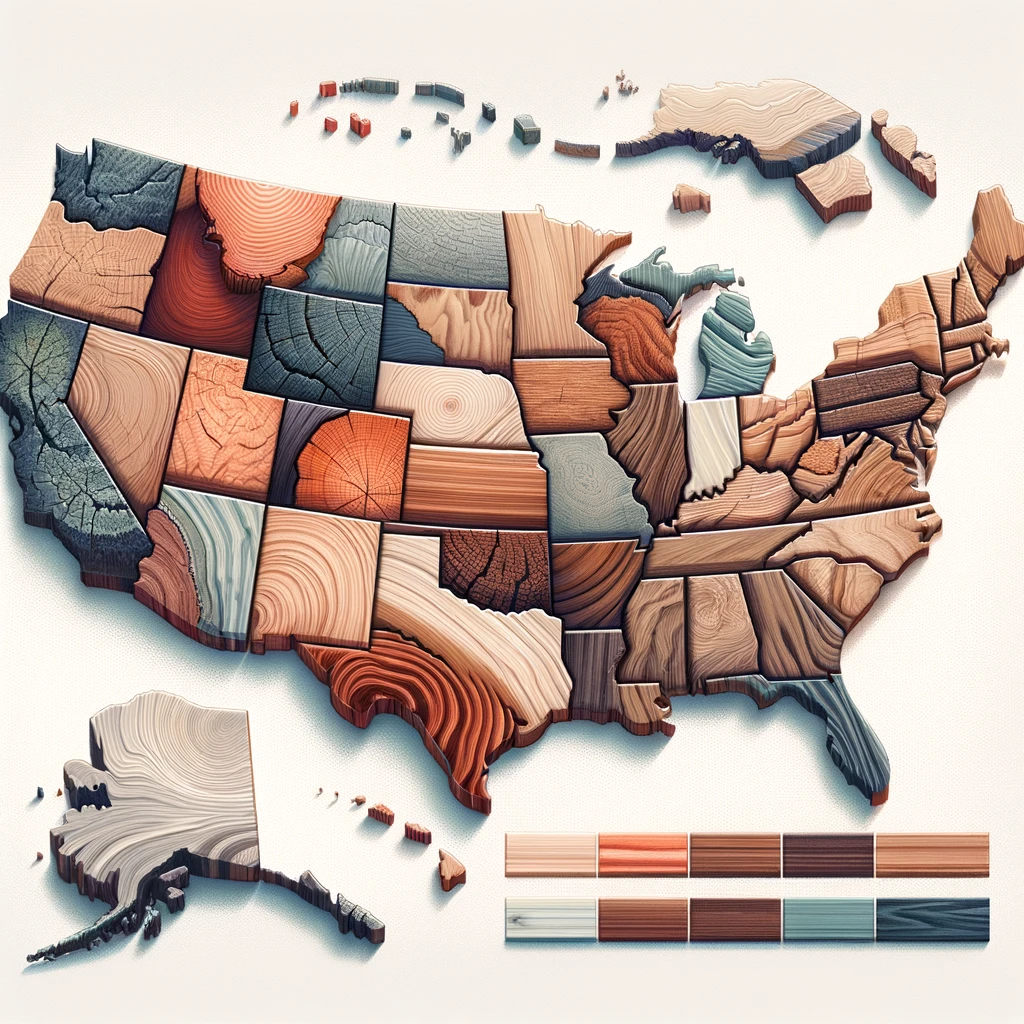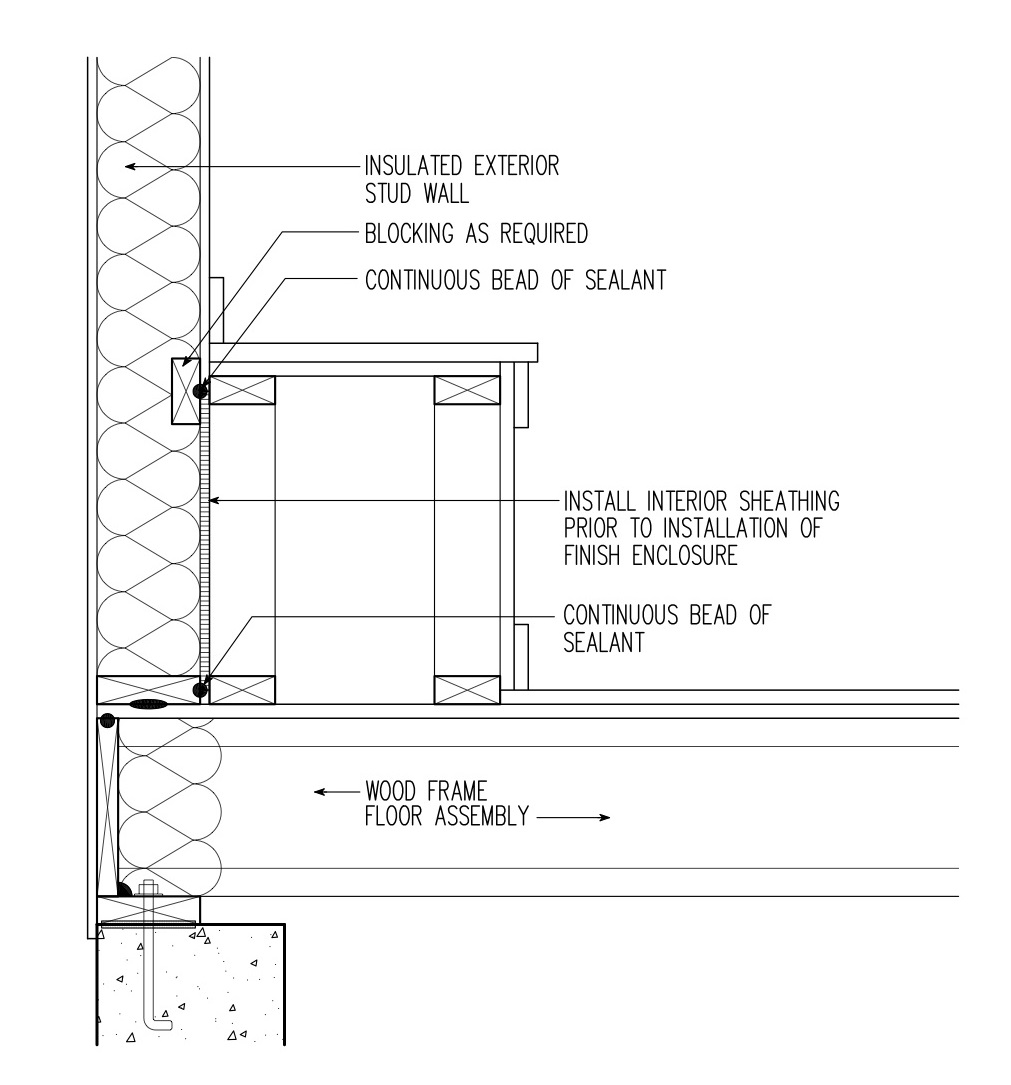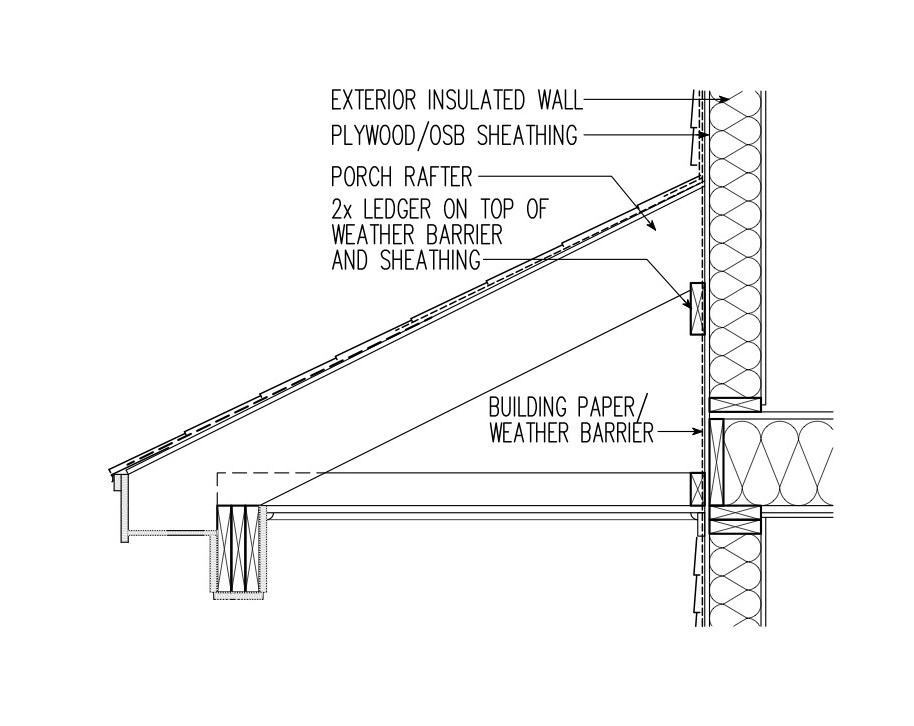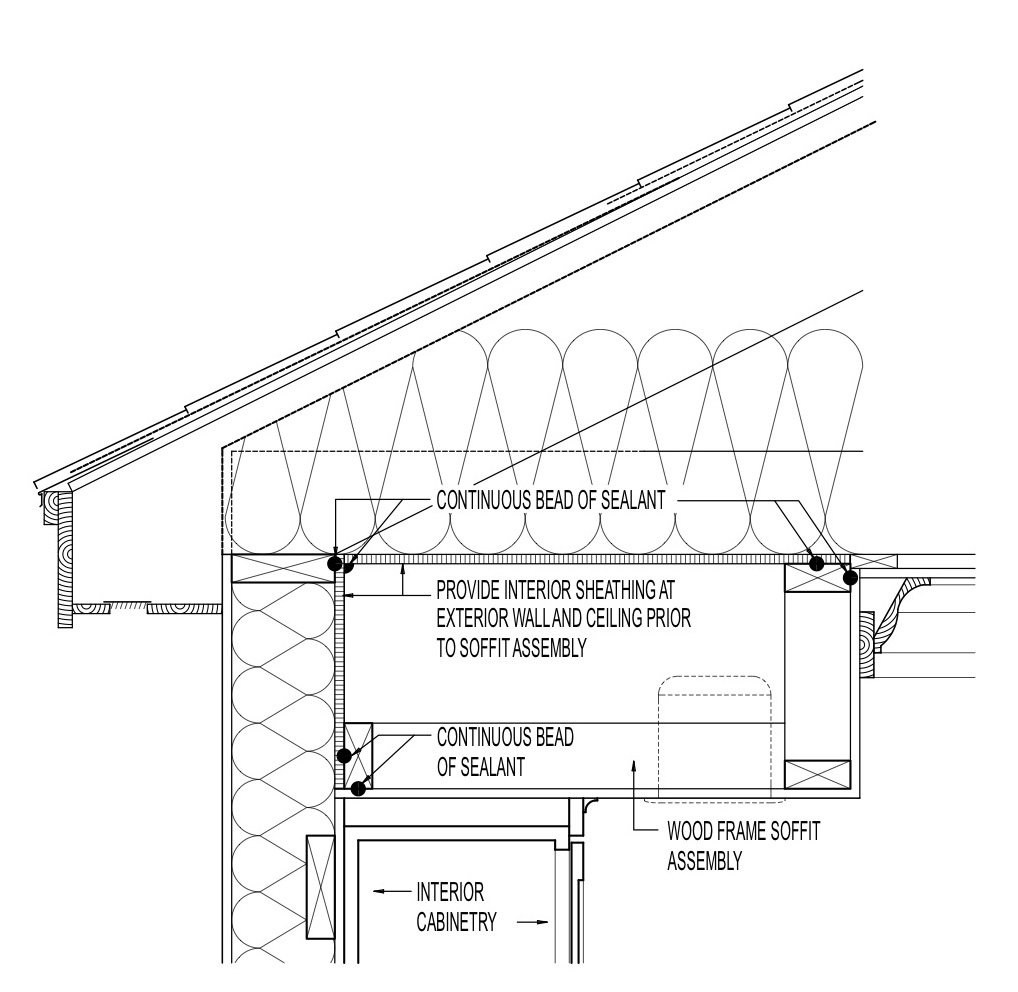Wood plays a crucial role in various industries, from construction to furniture manufacturing. In the United States, a variety of hardwoods are commercially important due to their unique characteristics and versatility. Let’s explore some of these commercially important Hardwoods, their characteristics, and their availability.
Red Alder (Alnus rubra)
- Location: Red alder grows along the Pacific coast from Alaska to California, with a focus in Oregon and Washington.
- Characteristics: The wood of red alder varies in color from almost white to pale pinkish brown. It has no visible boundary between heartwood and sapwood. Red alder is moderately light in weight and has intermediate strength properties but is low in shock resistance. It has relatively low shrinkage.
- Uses: Red alder is primarily used in furniture manufacturing but is also employed for sash, door panel stock, and other millwork.
Ash (Black Ash Group)
- Location: Black ash and pumpkin ash are found in the Northeast, Midwest, and South.
- Characteristics: Black ash has a darker brown heartwood compared to American white ash. It is lighter in weight than white ash.
- Uses: The black ash group is used for decorative veneer, cabinets, millwork, furniture, cooperage, and crates.
Ash (White Ash Group)
- Location: American white ash, green ash, blue ash, and Oregon ash are found in different regions of the United States.
- Characteristics: The heartwood of the white ash group is brown, and the sapwood is light-colored. It is heavy, strong, hard, stiff, and highly resistant to shock.
- Uses: American white ash and green ash are used for nonstriking tool handles, oars, baseball bats, and sporting goods. They are also used in decorative veneer, cabinets, furniture, flooring, millwork, and crates.
Aspen (Bigtooth and Quaking Aspen)
- Location: Aspen, including bigtooth and quaking aspen, is found in the northeastern and Lake States, as well as the Rocky Mountain States.
- Characteristics: Aspen wood is light in color and has a fine, uniform texture. It is lightweight, soft, and moderately low in strength.
- Uses: Aspen is used for lumber, pallets, boxes, crates, pulpwood, particleboard, strand panels, excelsior, matches, veneer, and turned articles.
Basswood (American Basswood)
- Location: American basswood grows in the eastern half of North America.
- Characteristics: The heartwood of basswood is pale yellowish brown with occasional darker streaks. It is soft, light in weight, and has fine texture.
- Uses: Basswood is used in venetian blinds, sashes, door frames, moulding, apiary supplies, woodenware, and boxes. It is also favored by wood carvers.
Beech (American Beech)
- Location: American beech is native to the eastern one-third of the United States.
- Characteristics: Beech wood ranges from nearly white sapwood to reddish-brown heartwood. It is heavy, hard, strong, and suitable for steam bending.
- Uses: Beech is used for flooring, furniture, brush blocks, handles, veneer, woodenware, containers, cooperage, and wood carvings.
Black Locust (Robinia pseudoacacia)
- Location: Black locust grows from Pennsylvania along the Appalachian Mountains to northern Georgia and Alabama. Also native to western Arkansas and southern Missouri.
- Characteristics:
- Sapwood: Narrow and creamy white
- Heartwood: Greenish yellow to dark brown
- Very heavy, very hard, very resistant to shock, very strong, and stiff
- Uses: Round, hewn, or split mine timbers, fence posts, poles, railroad crossties, stakes, and fuel. Historical uses include insulator pins and wooden pegs for ship construction.
Birch (Yellow Birch, Sweet Birch, Paper Birch, River Birch, Gray Birch)
- Location: Yellow and sweet birch grow in the Northeast and the Lake States. Paper birch is transcontinental.
- Characteristics: Yellow and sweet birch have white sapwood and light reddish-brown heartwood. Heavy, hard, strong, good shock-resisting ability. Paper birch is lower in weight and strength.
- Uses: Yellow and sweet birch lumber for furniture, boxes, baskets, crates, woodenware, cooperage, interior woodwork, doors, and veneer plywood. Paper birch for toothpicks, tongue depressors, ice cream sticks, turned products, and toys.
Buckeye (Yellow Buckeye, Ohio Buckeye)
- Location: Ranges from the Appalachians of Pennsylvania, Virginia, and North Carolina westward to Kansas, Oklahoma, and Texas.
- Characteristics: White sapwood merging into creamy or yellowish white heartwood. Uniform texture, generally straight grained, light in weight, soft, low shock resistance, low machinability.
- Uses: Suitable for pulping for paper, used for furniture, boxes and crates, food containers, woodenware, novelties, and planing mill products.
Butternut (White Walnut)
- Location: Grows from southern New Brunswick and Maine west to Minnesota, extending into northeastern Arkansas and western North Carolina.
- Characteristics: Narrow sapwood, nearly white, light brown heartwood with pinkish tones or darker brown streaks. Moderately light in weight, coarse textured, moderately weak, moderately soft, moderately high shock resistance.
- Uses: Lumber and veneer for furniture, cabinets, paneling, interior woodwork, and miscellaneous rough items.
Cherry, Black (Cherry, Wild Black Cherry, and Wild Cherry)
- Location: Found from southeastern Canada throughout the eastern half of the United States, with production centered chiefly in the Middle Atlantic States.
- Characteristics: Heartwood varies from light to dark reddish-brown, distinctive luster, white sapwood. Fairly uniform texture, very good machining properties, moderately heavy, strong, stiff, moderately hard, high shock resistance.
- Uses: Furniture, fine veneer panels, architectural woodwork, burial caskets, woodenware, novelties, patterns, and paneling.
Chestnut, American (Sweet Chestnut)
- Location: Originally grew from New England to northern Georgia but was largely killed by blight. Most lumber now comes from salvaged timbers.
- Characteristics: Grayish brown or brown heartwood, narrow almost white sapwood, coarse texture, moderate weight, moderately hard, moderately low strength, low resistance to shock, low stiffness, dries well, easy to work with tools.
- Uses: Once used for flooring, poles, railroad crossties, furniture, caskets, boxes, shingles, crates, and corestock for veneer panels. Now used as wormy chestnut for paneling, interior woodwork, and picture frames.
Cottonwood (Eastern Cottonwood, Swamp Cottonwood, Black Cottonwood, Balsam Poplar )
- Location: Cottonwood includes several species, with eastern cottonwood (P. deltoides) and swamp cottonwood (P. heterophylla) growing throughout the eastern half of the United States, while black cottonwood (P. trichocarpa) is found on the West Coast, and balsam poplar (P. balsamifera) grows from Alaska across Canada and in the northern Great Lakes States.
- Characteristics: Heartwood grayish white to light brown, sapwood whitish, merges gradually with heartwood. Uniform texture, generally straight grained. Odorless when well dried.
- Uses: Lumber, veneer, pulpwood, excelsior, and fuel. Lumber and veneer for boxes, crates, baskets, and pallets.
Elm (American Elm known as white elm, Slippery Elm as red elm, Rock Elm as cork elm, Winged Elm as wahoo, cedar Elm, and September Elm.)
- Location: Six species of elm grow in the eastern United States, including American elm, slippery elm, rock elm, winged elm, cedar elm, and September elm.
- Characteristics: Sapwood nearly white, heartwood light brown with red tinges. Soft and hard elm categories based on weight and strength. Soft elm includes American and slippery elm. Hard elm includes rock, winged, cedar, and September elm.
- Uses: Historically used for boxes, baskets, crates, furniture, agricultural supplies, caskets, and more. Today, used mostly for furniture and decorative panels. Hard elm is preferred for strength-requiring uses.
Hackberry
- Location: Hackberry (Celtis occidentalis) and sugarberry (C. laevigata) supply the lumber known as hackberry and grow in various regions of the United States.
- Characteristics: Sapwood varies from pale yellow to greenish or grayish yellow, heartwood commonly darker. Resembles elm in structure. Moderately heavy, moderately strong in bending, moderately weak in compression parallel to grain, moderately hard to very hard, high shock resistance, low stiffness. High shrinkage but keeps its shape well during drying.
- Uses: Lumber, furniture parts, dimension stock, and veneer.
Hickory (Pecan Hickory Group)
- Location: Species of the pecan hickory group include bitternut hickory, pecan hickory, water hickory, and nutmeg hickory. They grow in various regions, with bitternut hickory growing throughout the eastern half of the United States.
- Characteristics: Sapwood white or nearly white, relatively wide. Heartwood somewhat darker. Heavy, high shrinkage.
- Uses: Used for tool and implement handles and flooring. Lower grades for pallets and veneer for furniture and decorative paneling.
Hickory (True Hickory Group)
- Location: True hickories found throughout the eastern half of the United States, including shagbark, pignut, shellbark, and mockernut.
- Characteristics: Sapwood white and usually quite wide, except in old, slow-growing trees. Heartwood reddish. Exceptionally tough, heavy, hard, strong, shrinks considerably in drying.
- Uses: High-quality hickory for tool handles, ladder rungs, athletic goods, agricultural implements, dowels, gymnasium apparatuses, poles, furniture. Lower grade for pallets and similar items. Hickory sawdust and chips used to flavor meat by smoking.
Honeylocust (Gleditsia triacanthos)
- Location: Honeylocust is most commonly found in the eastern United States, excluding New England and the South Atlantic and Gulf Coastal Plains.
- Characteristics:
- Sapwood: Wide and yellowish
- Heartwood: Light red to reddish-brown
- Heavy, very hard, strong in bending, stiff, resistant to shock, and durable when in contact with the ground
- Uses: Primarily used locally for fence posts and general construction. Occasionally used in combination with other species in lumber for pallets and crating.
Magnolia (Southern Magnolia, Sweetbay, Cucumbertree)
- Location: Southern magnolia and sweetbay are found along the Atlantic and Gulf Coasts from Long Island to Texas. Cucumbertree grows from the Appalachians to the Ozarks northward to Ohio. Louisiana leads in the production of magnolia lumber.
- Characteristics:
- Wood closely resembles yellow-poplar
- Moderately heavy, moderately low in shrinkage, moderately low in bending and compressive strength, moderately hard and stiff, and moderately high in shock resistance
- Uses: Furniture, boxes, pallets, venetian blinds, sashes, doors, veneer, millwork.
Maple (Hard Maple Group) (Sugar Maple, Black Maple)
- Location: Primarily in the Middle Atlantic and Great Lake States, with a natural range from Vermont to the Great Plains and southward into Louisiana and Texas.
- Characteristics:
- Sapwood: Commonly white with a slight reddish-brown tinge
- Fine, uniform texture
- Heavy, strong, stiff, hard, and resistant to shock
- Uses: Flooring, furniture, cabinets, cutting boards, pianos, billiard cues, handles, novelties, bowling alleys, dance and gymnasium floors, spools, and bobbins.
Maple (Soft Maple Group) (Silver Maple, Red Maple, Boxelder, Bigleaf Maple)
- Location: Found in the eastern United States, except for bigleaf maple, which comes from the Pacific Coast.
- Characteristics:
- Heartwood and sapwood resemble hard maple
- Not as heavy, hard, and strong as hard maple
- Uses: Railroad crossties, boxes, pallets, crates, furniture, veneer, wooden ware, and novelties.
Oak, Live (Quercus species)
- Location: Oak trees can be found in various regions. Red oak species are prominent in the Eastern States.
- Characteristics:
- Sapwood: Nearly white, 2 to 5 cm wide
- Heartwood: Brown with a tinge of red
- Oak lumber can vary in properties based on species.
- Uses: Oak is used for lumber, veneer, railroad crossties, mine timbers, fence posts, veneer, pulpwood, and fuelwood. It’s also remanufactured into flooring, furniture, general millwork, boxes, pallets, crates, and more.
Oak (White Oak Group) (White Oak, Chestnut Oak, Post Oak, Overcup Oak, Swamp Chestnut Oak, Bur Oak, Chinkapin Oak, Swamp White Oak, Oregon White Oak)
- Location: White oak species are primarily found in the South, South Atlantic, and Central States.
- Characteristics:
- Sapwood: Nearly white, 2 to 5 cm wide
- Heartwood: Generally grayish brown
- Oak in the white oak group is known for its tight grain and resistance to liquids.
- Uses: Lumber, railroad crossties, cooperage (barrel making), mine timbers, fence posts, veneer, fuelwood, and various other products. It’s especially sought after for tight cooperage and ship planking due to its decay resistance.
Sassafras (Sassafras albidum)
- Location: Sassafras ranges from southeastern Iowa and eastern Texas eastward.
- Characteristics:
- Sapwood: Light yellow
- Heartwood: Grayish brown to dark brown with a reddish tinge
- Moderately heavy, moderately hard, moderately weak in bending and endwise compression, high in shock resistance, and resistant to decay
- Uses: Fence posts, rails, general millwork, and historically used for dugout canoes.
Sweetgum (Liquidambar styraciflua)
- Location: Sweetgum grows from southwestern Connecticut westward into Missouri and southward to the Gulf Coast.
- Characteristics:
- Sap gum (sapwood) or redgum (heartwood)
- Interlocked grain, needs slow drying
- Moderately heavy, moderately hard, moderately strong, moderately stiff, and moderately high in shock resistance
- Uses: Lumber, veneer, plywood, slack cooperage, railroad crossties, fuel, pulpwood, boxes, crates, furniture, interior molding, and millwork.
Sycamore, American (Platanus occidentalis)
- Location: American sycamore ranges from Maine to Nebraska, southward to Texas, and eastward to Florida.
- Characteristics:
- Sapwood: Light in color
- Heartwood: Reddish brown
- Fine texture, interlocked grain
- Moderately heavy, moderately hard, moderately stiff, moderately strong, and good shock resistance
- Uses: Lumber, veneer, railroad crossties, slack cooperage, fence posts, fuel, furniture, boxes, pallets, flooring, handles, butcher blocks, and more.
Tanoak (Lithocarpus densiflorus)
- Location: Tanoak is found from southwestern Oregon to southern California, mostly near the coast but also in the Sierra Nevadas.
- Characteristics:
- Sapwood initially light reddish brown, darkening with age
- Heavy and hard, similar to eastern white oak in strength
- Tendency to collapse during drying, susceptible to decay
- Uses: Tanoak is excellent for flooring in homes or commercial buildings due to its hardness and abrasion resistance. It is also suitable for industrial applications such as truck flooring, baseball bats, veneer, high-quality furniture, and more.
Tupelo (Nyssa species – Water Tupelo, Black Tupelo, Swamp Tupelo, Ogeechee Tupelo)
- Location: Different species of tupelo grow in the southeastern United States, with black tupelo also found in the eastern United States.
- Characteristics:
- Heartwood is light brownish gray, merging into lighter sapwood
- Fine texture, uniform properties
- Moderately heavy, moderately strong, moderately hard and stiff, and moderately high in shock resistance
- Uses: Tupelo is cut for lumber, veneer, pulpwood, railroad crossties, slack cooperage, boxes, pallets, crates, baskets, and furniture. It is especially suitable for tight cooperage due to its properties.
Walnut, Black (Juglans nigra)
- Location: Black walnut ranges from Vermont to the Great Plains and southward into Louisiana and Texas.
- Characteristics:
- Heartwood varies from light to dark brown; sapwood is nearly white
- Straight grained, easily worked, stable
- Heavy, hard, strong, stiff, and good resistance to shock
- Uses: Highly valued for furniture, architectural woodwork, and decorative panels. Also used for gunstocks, cabinets, interior woodwork, and natural finishes.
Willow, Black (Salix nigra)
- Location: Black willow is found in the Mississippi Valley, from Louisiana to southern Missouri and Illinois.
- Characteristics:
- Heartwood is grayish brown or light reddish brown, with darker streaks
- Uniform texture, light in weight
- Low strength as a beam or post, moderately soft, and moderately high in shock resistance
- Uses: Lumber is remanufactured into boxes, pallets, crates, caskets, and furniture. Small amounts have been used for slack cooperage, veneer, excelsior, charcoal, pulpwood, artificial limbs, and fence posts.
Yellow-Poplar (Liriodendron tulipifera)
- Location: Yellow-poplar grows from Connecticut and New York southward to Florida and westward to Missouri.
- Characteristics:
- Sapwood sometimes called white poplar or whitewood
- Heartwood generally grayish brown
- Known for its tight grain
- Uses: Lumber, veneer, furniture, flooring, cabinets, cutting boards, pianos, billiard cues, handles, novelties, bowling alleys, dance and gymnasium floors, spools, bobbins, and more.
Each wood species has its own unique characteristics and applications, making them valuable resources in various industries. Availability may vary depending on the region, making it important for industries to source these woods based on their specific needs. For more detailed information or assistance with wood sourcing, please feel free to contact us at Allied Emergency Services, INC.
For immediate service or consultation, you may contact us at Allied Emergency Services, INC.
Contact Information:
- Phone: 1-800-792-0212
- Email: Info@AlliedEmergencyServices.com
- Location: Serving Illinois, Wisconsin, and Indiana with a focus on the greater Chicago area.
If you require immediate assistance or have specific questions, our human support is readily available to help you.
Disclaimer: This article is intended for informational purposes only. For professional advice, consult experts in the field.










